Whopper Tomato Vs Big Beef Tomato
 Grow enough tomatoes this year for fresh eating and also for cooking, canning, or preserving (if that's what you have in mind). But don't grow more than you can use or give away.
Grow enough tomatoes this year for fresh eating and also for cooking, canning, or preserving (if that's what you have in mind). But don't grow more than you can use or give away.
Planting more tomatoes than you need is a fairly common mistake. (A mistake you're never fully aware of until late in the summer.) Some forethought before the growing season begins will save time, effort, and space in your garden for other crops.
Best tomato growing tips: How to Grow Tomatoes .
Two or three tomato plants for each person in the household should give you just the right amount for fresh eating.
Which tomatoes should you grow? Here is a roundup of the most popular, easiest growing, and easiest to find tomato varieties. Keep this list handy when ordering seeds or going to the garden center. This list should help you find the right tomatoes for you and your family's needs, and it will help you time the planting of tomatoes for the coming season.
To use the lists below, here are some abbreviations and explanations:

Open-pollinated (OP) or Hybrid (H) Tomatoes. Look for the note in the charts next to the varietal name. Tomatoes can be divided into two basic types: open-pollinated and hybrid. Open-pollinated (OP) tomatoes pollinate themselves and produce offspring just like themselves in looks and taste. Hybrid (H) tomatoes are a cross between two varieties which can occur on purpose or by accident. Tomato breeders cross-pollinate differing varieties to create plants with specific attributes. The difference between open-pollinated and hybrid is important for several reasons; one important consideration for you is if you intend to save the seed from one or two of your tomatoes at the end of the season and hope to use them next year to start a new garden. You can with open-pollinated seed; you can't with hybrid seed. The hybrid seed will not grow true.
Notable among open-pollinated tomato varieties are heirloom tomatoes or old-fashioned tomatoes. Heirloom tomatoes have been around for generations and include dozens and dozens of plants that have very desirable natural mutations or traits. Heirloom tomato varieties are often well-suited to a particular climate or region.
Disease resistant notes. Disease-resistant varieties are identified by a letter code which will be found on seed packets or transplant identification stakes: "V" (verticillium wilt), "F" (fusarium wilt), "N" (nematodes–microorganisms that cause root cankers); and "T" (tobacco mosaic virus). Resistant varieties are noted after the variety name of each tomato in the chart below.

Determinate and indeterminate tomato varieties. Determinate (D) varieties produce bushy plants just a few feet tall that tend to come to harvest all at the same time–usually over a period of about 4 weeks. Determinate cultivars are a good choice in short-season regions because they tend to ripen more quickly.
Indeterminate (I) varieties are vining plants that keep on growing, producing new clusters of flowers, and fruiting until the first frost. These plants tend to be continuous producers but they can grow unwieldy and will require staking, caging, or trellis growing.
Growing suggestion. Where the growing season is long, plant determinate tomatoes for a quick early harvest and also plant late-maturing indeterminate tomatoes for a continuous supply through the summer.
Days. The days listed in these charts are the number of days to maturity or harvest from the time of seed sowing. But this time is under optimal seed starting conditions–meaning a soil germination temperature of 85°F. If you are sowing seed in the garden or in less than optimal circumstances add 5 to 10 days or more to this number.
Use. Meaning how you plant to use the tomato in the kitchen: C=Container or miniature variety; these are often used as salad or snacking tomatoes. S=Slicing or fresh eating tomatoes; use these on sandwiches. P=Paste or cooking tomatoes.

Early Harvest Tomato Varieties (50-65 days). Early harvest or first-early tomatoes are more compact than main-season tomato varieties. Many of these cultivars are suited to short-growing season regions or cool-summer regions. Generally, these tomatoes will be small to medium-sized.
| Early-Harvest Variety | D/I | Days | Color | Use | Comments |
|---|---|---|---|---|---|
| Burpee's Pixie (H) | D | 60 | Red | C | 16-inch plants |
| Bush Beefsteak (OP) | D | 62 | Red | S | Large, firm |
| Champion (H) VFNT | I | 65 | Red | S | Smooth, large |
| Cherry Grande (H) VF | D | 58 | Red | C | Large cherry tomato |
| Early Cascade VF (H) | I | 61 | R | S | Salads, sandwiches |
| Early Girl (H) VFF | I | 62 | Red | S | Favorite early crop |
| Earliana (OP) | I | 65 | Red | S | Mild flavor |
| Earlirouge (OP) | D | 65 | Red | S | Sets fruit in extreme temperatures |
| Glacier (OP) | D | 54 | Red | S | Good flavor |
| Gold Nugget (OP) | D | 60 | Gold | C | Nearly seedless |
| Ida Gold (OP) | D | 55 | Orange | S | Cold tolerant |
| Juliet (H) | I | 62 | Red | P | AAS winner |
| Marmande (OP) VF | D | 65 | Red | S | French gourmet |
| New Yorker (OP) V | D | 64 | Red | S | Small, compact, early |
| Orange Pixie (H) | D | 52 | Orange | C | 1-to-2-inch fruits |
| Oregon Spring (OP) | D | 60 | Red | S | Adapted to cool regions |
| Pilgrim (OP) | D | 65 | Red | S | Compact, good flavor |
| Quick Pick (H) VFNT | I | 60 | Red | S | Good flavor |
| Red Currant (OP) | I | 65 | Red | C | Small, big flavor |
| Siberia (OP) | D | 50 | Red | S | Tolerates cold |
| Small Fry (H)VFN | D | 60 | Red | C | Cherry-size 40 to cluster |
| Stupice (OP) | I | 55 | Red | S | Cool, short season |
| Sub-Arctic Maxi (OP) | D | 52 | Red | S | Very cold tolerant |
| Sun Gold (H) | I | 65 | Red | C | Sweet and early |
| Super Chief (H) | D | 60 | Red | S | Very early; large fruits |
| Sweet Chelsea (H) | I | 65 | Red | C | Drought tolerant |
| Taxi (OP) | D | 64 | Yellow | S | Compact |
| Tigerella (Mr. Stripey) (OP) | I | 56 | Orange-Yellow | S | Tangy flavor |
| Tiny Tim (OP) | D | 55 | Red | C | Grow in a hanging basket |
| Whippersnapper (OP) | D | 52 | Dark Pink | C | Extra early |

Main-Crop Tomato Varieties (65-80 days). Main-crop or mid-season tomato varieties generally bear larger fruit. These tomatoes are well-suited for summer growing and are very good producers. Many can be pruned and trained to stakes or grown in wire cages or on trellises.
| Main-Crop Variety | D/I | Days | Color | Use | Comments |
|---|---|---|---|---|---|
| Abraham Lincoln (OP) | I | 78 | Red | S | Flavorful old-timer |
| Bellstar (OP) | D | 70 | Red | P | Large plum type |
| Better Boy VFV (H) | I | 72 | Red | S | Flavorful, firm |
| Big Boy (H) | I | 78 | Red | S | Meaty, long season |
| Black Prince (OP) | I | 70 | Dark red | S | Compact, tasty and juicy |
| Bonny Best (OP) | I | 70 | Red | S | Old-fashion favorite |
| Brandywine (OP) | I | 85 | Pink-red | S | Heirloom; superb flavor |
| Burpee's Big Girl (H) VF | I | 78 | Red | S | Crack-resistant |
| Burpee's Supersteak (H) VFN | I | 80 | Red | S | Rich flavor, beefsteak |
| Burpee's VF (H) | I | 72 | Red | S | Firm, meaty |
| Campbell 1327 (OP) | D | 75 | Red | S | Firm, smooth |
| Celebrity (H) VFNT | D | 70 | Red | AAS winner | |
| Cherokee Purple (OP) | I | 72 | Pink-purple | S | Multicolor flesh, southern heirloom |
| Creole (OP) | I | 72 | Red | S | Southern favorite |
| Dutchman (H) | I | 80 | Dark pink | S | Low-acid beefsteak |
| Evergreen (OP) | I | 72 | Green | S | Green flesh, mild flavor |
| First Lady (H) | I | 66 | Red | S | Disease resistant |
| Floramerica (H) VFN | D | 70 | Red | S | AAS winner |
| Gardener's Delight (OP) | D | 65 | Red | C | Sugar sweet |
| Glamour (OP) | I | 74 | Red | S | Crack-resistant |
| Golden Boy (H) | I | 75 | Yellow-orange | Good grower | |
| Heat Wave (H) VFF | D | 68 | Red | S | Heat tolerant |
| Heinz 1350 (OP) VF | D | 75 | Red | P | Canning variety |
| Homestead 24 (OP)F | D | 82 | Red | S | Southern performer |
| Husky Gold (H) VF | I | 70 | Gold | S | AAS winner |
| Jet Star (H) VF | I | 72 | Red | S | Flavorful, low acid |
| Lemon Boy (H) | I | 72 | Yellow | S | Mild flavor |
| Marglobe (OP) F | D | 75 | Red | S | Smooth, firm |
| Monte Carlo (H) VFN | I | 75 | Red | S | Smooth, long season |
| Mortgage Lifter (OP) VFN | I | 85 | Red | S | Southern beefsteak |
| Park Whopper (H) VFNT | I | 65 | Red | S | Good disease resistance |
| Patio Hybrid (H) F | D | 70 | Red | C | Good yield, favorite |
| Persimmon (OP) | I | 80 | Orange | S | Fine flavor |
| Ponderosa (OP) | I | 90 | Pink | S | Beefsteak |
| Porter (OP) | I | 65 | Red | S | Heat resistant |
| Quick Pick (H) | I | 79 | Red | S | Heavy yields |
| Red Pear (OP) | I | 70 | Red | S | Small fruited |
| Roma (OP) VF | D | 75 | Red | C | Standard paste variety |
| Rutgers (Jersey) (OP) | I | 74 | Red | P | Canning favorite |
| Small Fry (H) VF | D | 72 | Red | C | Heavy yields, compact |
| Solar Set (H) | D | 70 | Red | S | Heat tolerant |
| Sunray (OP) F | I | 80 | Yellow-orange | S | Widely grown |
| Super Fantastic VF (H) | I | 70 | Red | S | Smooth, long producer |
| Supersonic (H) VF | D | 79 | Red | S | All-around performer |
| Super Sweet 100 (H) | I | 70 | Red | S | Sweet and productive |
| Sweet Million (H) FN | I | 60 | Red | S | Improved Sweet 100 |
| Sweet 100 (H) | I | 65 | Red | C | Big yields |
| Terrific (H) VFN | I | 70 | Red | S | Meaty, long season |
| The Juice | D | Red | PS | For canning or juice | |
| Valencia (OP) | I | 75 | Orange | S | Maine heirloom |
| Veepick | D | Red | P | Plum; peels easily | |
| White Beauty | I | White | S | Mild and sweet | |
| Wonder Boy (H) VFN | I | 80 | Red | S | Heavy producer |
| Yellow Currant (OP) | I | 70 | Yellow | C | Very small |
| Yellow Pear (OP) | I | 76 | Yellow | C | Mild; preserves salads |
| Yellow Plum (H) | I | 70 | Yellow | C | Preserves and salads |

Late-Season Tomatoes (80+ days to Harvest). Late-season tomato varieties are long-stayers in your garden. Grow these tomatoes only if you have a generous growing season. Late-season tomatoes tend to be larger and juicier because they take full advantage of the summer season.
| Late-Season Variety | D/I | Days | Color | Use | Comments |
|---|---|---|---|---|---|
| Ace 55 VF (OP) | D | 80 | Red | S | Tart to sweet |
| Arkansas Traveler (OP)F | I | 90 | Red | S | Southern heirloom |
| Beefmaster (H) VFN | I | 80 | Red | S | Meaty, flavorful |
| Beefsteak (OP) | I | 90 | Red | S | Large, delicious |
| Big Rainbow (OP) | I | 102 | Green-red | S | Long season |
| Brandywine (OP) | D | 80 | Pink-red | S | Good flavor |
| Burgess Stuffing (OP) | I | 74 | Red | S | Mild |
| Cal-Ace (H) VF | D | 90 | Red | S | Adapted to arid areas |
| Caro Rich (OP) | D | 80 | Orange | S | Cool climate |
| Delicious (OP) | I | 77 | Red | S | Beefsteak |
| Doublerich (OP) | D | 80 | Red | S | Canner |
| Giant Belgium (OP) | I | 90 | Dark Pink | S | Low acid; large fruit |
| Golden Boy (H) | I | 80 | Yellow | S | Mild flavor |
| Green Grape (OP) | D | 80 | Yellow-green | S | Sweet-tart |
| Green Zebra (OP) | I | 80 | Green-yellow | S | Mild flavor |
| Homestead 24 (OP) F | D | 82 | Red | S | Adapted to the South |
| Oxheart (OP) | I | 86 | Red | S | Old favorite |
| Pineapple (H) | I | 90 | Red-Yellow | S | Striped Heirloom |
| Pink Ponderosa (OP) | I | 90 | Red | S | Meaty, old-timer |
| San Marzano (OP) | I | 80 | Red | P | Mild, meaty; paste-type |
| Super Bush (H) | D | 70 | Red | S | Big yielder |
| Tangerine (OP) | I | 85 | Yellow-Orange | S | Heirloom beefsteak |
Best tomato growing tips: How to Grow Tomatoes.
If you've got tomato questions turn to The Tomato Grower's Answer Book .
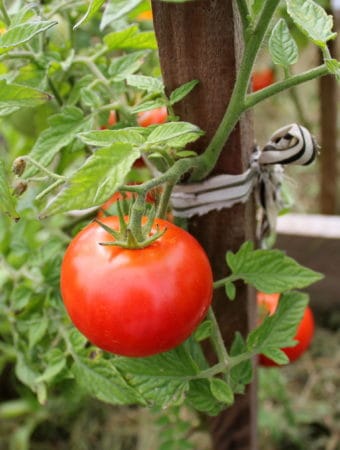
How To Grow Tomatoes
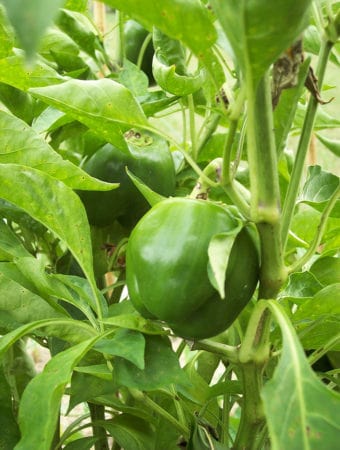
How To Grow Peppers
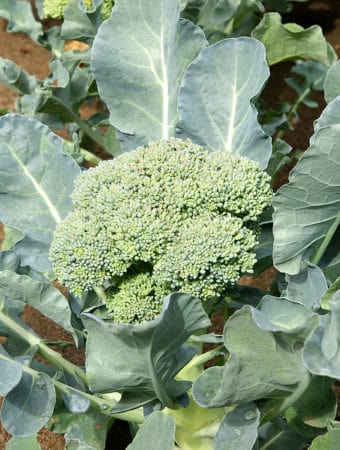
How To Grow Broccoli
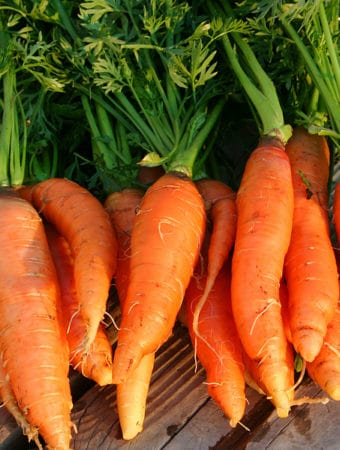
How To Grow Carrots
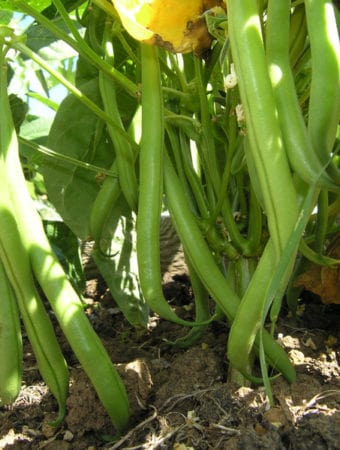
How To Grow Beans
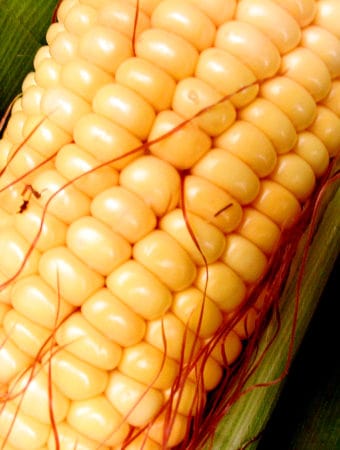
How To Grow Corn
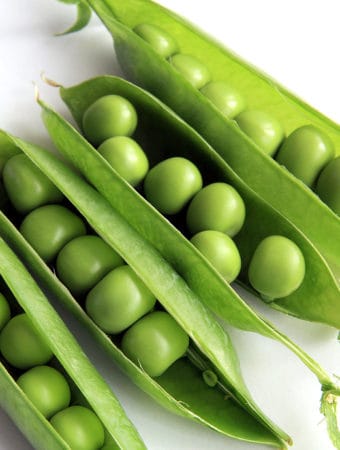
How To Grow Peas
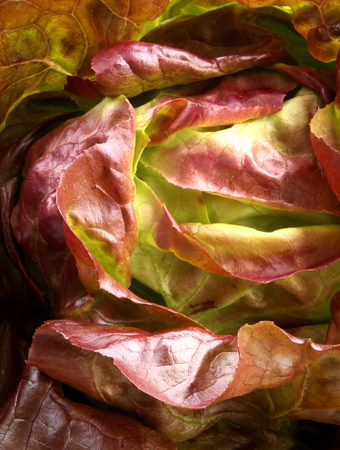
How To Grow Lettuce
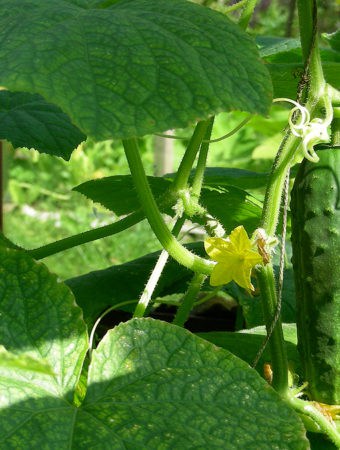
How To Grow Cucumbers
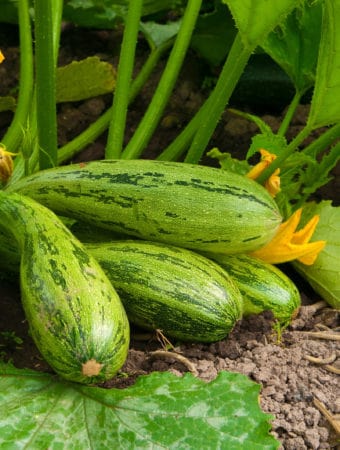
How To Grow Zucchini and Summer Squash
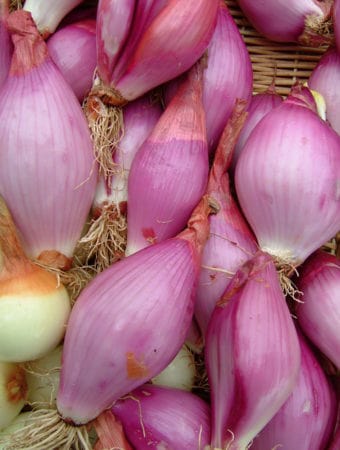
How To Grow Onions
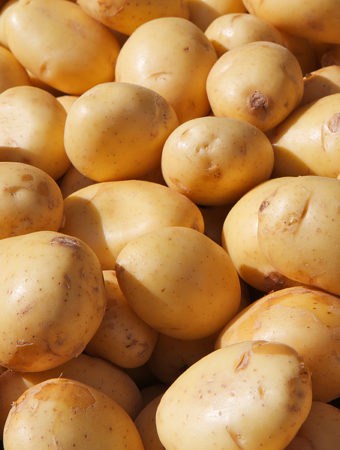
How To Grow Potatoes
Source: https://harvesttotable.com/how_to_choose_a_tomato_for_pla/
0 Response to "Whopper Tomato Vs Big Beef Tomato"
Post a Comment